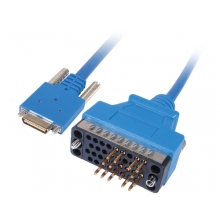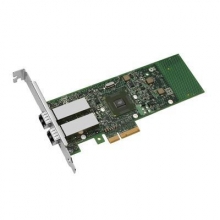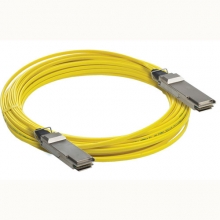- Optical Transceivers
- SFP+ Transceivers
- XENPAK Transceivers
- XFP Transceivers
- X2 Transceivers
- SFP Transceivers
- Compatible SFP
- 3Com SFP
- Alcatel-Lucent SFP
- Allied Telesis SFP
- Avaya SFP
- Brocade SFP
- Cisco SFP
- D-Link SFP
- Dell SFP
- Enterasys SFP
- Extreme SFP
- Force10 SFP
- Foundry SFP
- H3C SFP
- HP SFP
- Huawei SFP
- Intel SFP
- Juniper SFP
- Linksys SFP
- Marconi SFP
- McAfee SFP
- Netgear SFP
- Nortel SFP
- Planet SFP
- Q-logic SFP
- Redback SFP
- SMC SFP
- SUN SFP
- TRENDnet SFP
- ZYXEL SFP
- Other SFP
- FE SFP
- GE SFP
- OC3 SFP
- OC12 SFP
- OC48 SFP
- Copper SFP
- CWDM SFP
- DWDM SFP
- BIDI SFP
- Fiber Channel SFP
- Multi-Rate SFP
- SGMII SFP
- Compatible SFP
- GBIC Transceivers
- Passive Components
- Networking
- Cables
- Equipments
- Tools
- Special Offers


Industry News
10x10 MSA: Fast and efficient
September 24, 2011The speed with which Google and its fellow MSA members moved from launching the effort to releasing specifications both established Google as a major market influencer and reinforced the “keep it simple and straightforward” message it had been preaching. The problem with 100GBase-LR4 devices, Google representatives had asserted during their trade show tour, was that they would be expensive and power hungry because of the use of 25-Gbps components; they also would take longer to develop and optimize than Google’s requirements would allow.
10x10 MSA pros and cons
September 24, 2011The 10x10 MSA module would appear to have two things going for it: a built-in ecosystems of component and module vendors, systems suppliers who might incorporate the modules into their hardware, and three users who might be interested in deploying it in their networks; and a set of specifications that likely would lead to a cheaper module than any based on 100GBase-LR4. However, it also has two things going against it: the fact that it isn’t within the official IEEE 802.3 Ethernet cocoon and a certain amount of uncertainty regarding how much that matters to potential customers.
PMC-Sierra offers SoC for 40-Gbps DP-QPSK coherent designs
September 24, 2011PMC-Sierra (NASDAQ:PMCS) has taken the first major step towards evolving designs leveraging dual-polarization quadrature phase-shift keying (DP-QPSK) with coherent detection away from discrete electronic elements towards off-the-shelf system on a chip (SoC) devices. The company’s new PM6373 POLO 40G integrates SerDes, digital signal processing (DSP), analog-to-digital converter (ADC), OTN framing, and Forward Error Correction (FEC) functions for use in 40-Gbps designs. The obvious question, of course, is when PMC-Sierra plans to tackle 100 Gbps.
Georgia Tech, VI Systems demo 25 Gbps over plastic optical fiber
September 24, 2011VI Systems GmbH says that researchers at The Georgia Institute of Technology have demonstrated 25-Gbps error-free data transmission over 100 m of 80 μm-diameter core plastic optical fiber (POF) using one of VI Systems’ V40-850C 850-nm vertical cavity surface emitting lasers (VCSELs)
When will 100-Gbps DP-QPSK coherent modules be available
September 24, 2011The Optical Internetworking Forum (OIF) has received significant attention and praise for its efforts to develop an ecosystem of component and subsystem technology to support long-haul 100-Gbps DWDM applications using dual-polarization quadrature phase-shift keying (DP-QPSK) modulation paired with coherent detection on the receive end. The most significant benefits of the OIF endeavor were expected to accrue in the form of multisource agreement (MSA) standard optical modules that would speed 100-Gbps technology down the cost-reduction curve.
GigOptix polymer 40G Mach-Zehnder modulator
September 23, 2011GigOptix, Inc. (OTCBB:GGOX) says that it has crossed a pair of items off its “to do” list as it prepares the LX8401 40-Gbps Mach-Zehnder modulator for commercialization. First, “a number” of Tier 1 customers have validated the the fiber-optic component's performance in system-level tests. Second, the LX8401 has completed the High Temperature Operating Lifetime (HTOL) reliability assessment of Telcordia GR-468 without operating performance degradation.



















































